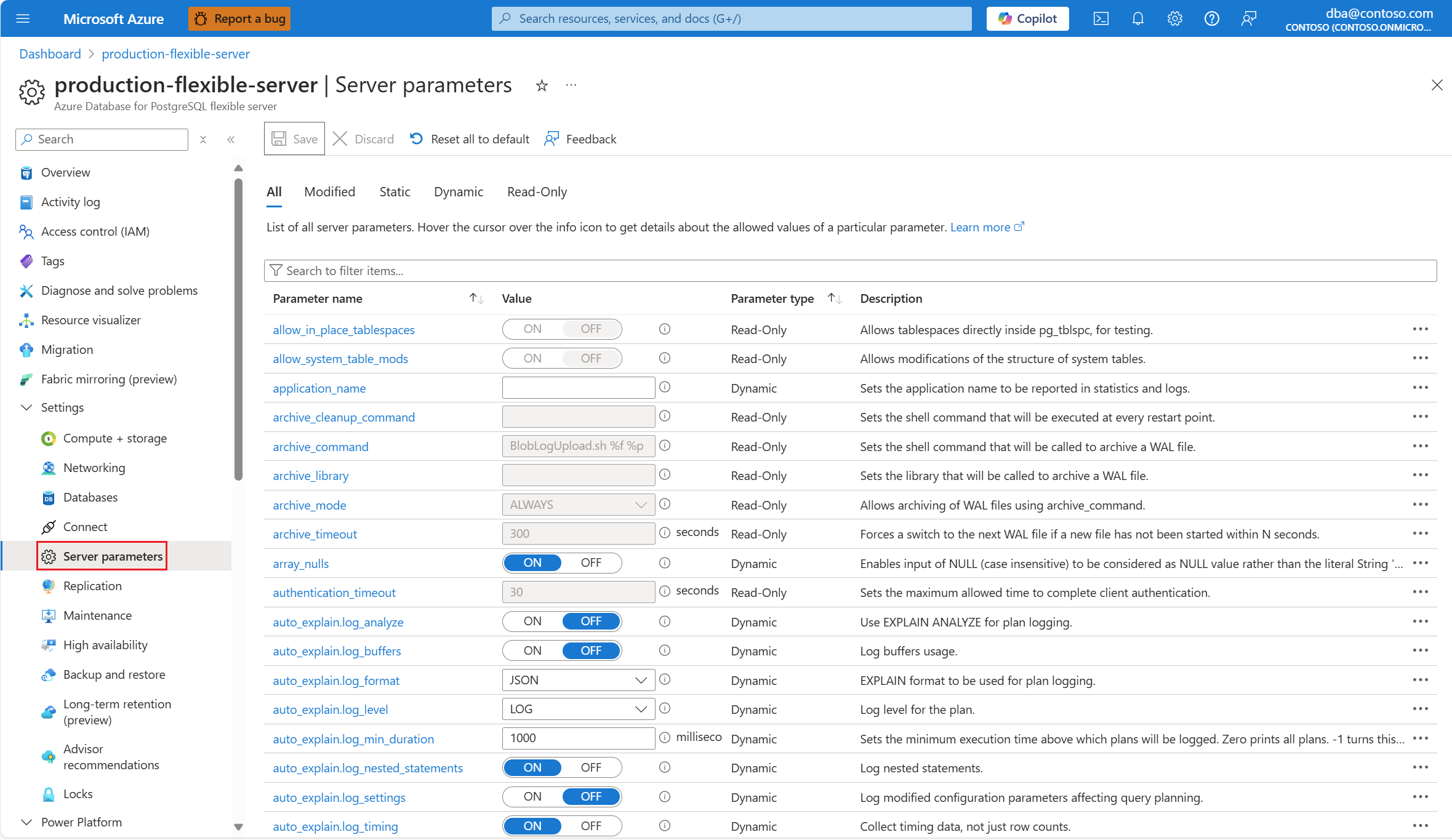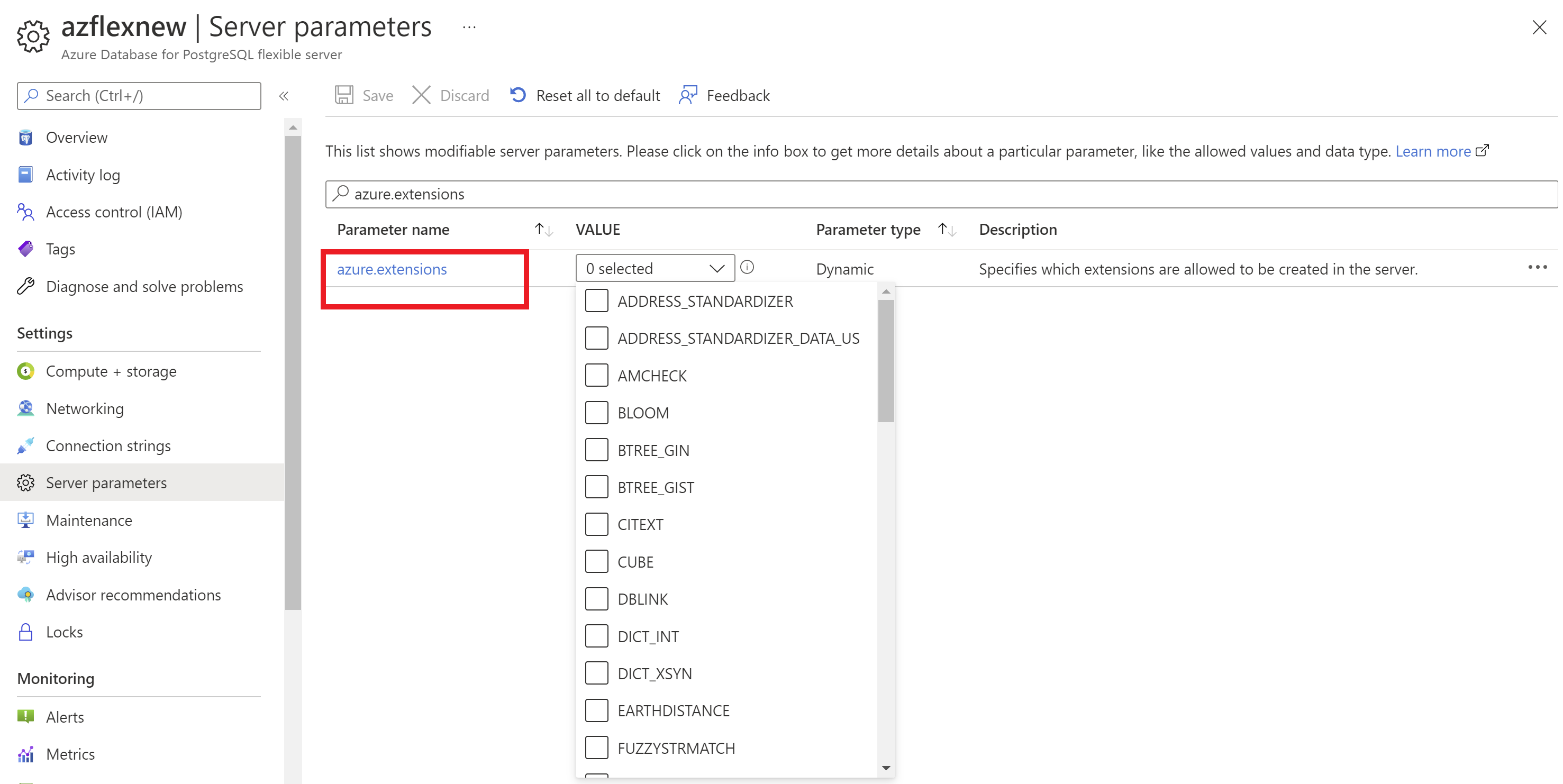Allow extensions
- Article
-
-
APPLIES TO:  Azure Database for PostgreSQL - Flexible Server
Azure Database for PostgreSQL - Flexible Server
Before creating extensions in Azure Database for PostgreSQL flexible server, you must allowlist them.
Steps to allow extensions
Using the Azure portal:
Select your Azure Database for PostgreSQL flexible server.
From the resource menu, under Settings section, select Server parameters.

Select the extensions that you want to allowlist, from the ones available in the azure.extensions parameter.

Select Save.

You can allow extensions via the CLI parameter set command.
az postgres flexible-server parameter set --resource-group <resource_group> --server-name <server> --subscription <subscription_id> --name azure.extensions --value <extension_name>,<extension_name>
Using the ARM Template:
The following example adds extensions to the allowlist dblink, dict_xsyn, pg_buffercache on a server whose name is postgres-test-server:
{
"$schema": "https://schema.management.azure.com/schemas/2019-04-01/deploymentTemplate.json#",
"contentVersion": "1.0.0.0",
"parameters": {
"flexibleServers_name": {
"defaultValue": "postgres-test-server",
"type": "String"
},
"azure_extensions_set_value": {
"defaultValue": " dblink,dict_xsyn,pg_buffercache",
"type": "String"
}
},
"variables": {},
"resources": [
{
"type": "Microsoft.DBforPostgreSQL/flexibleServers/configurations",
"apiVersion": "2021-06-01",
"name": "[concat(parameters('flexibleServers_name'), '/azure.extensions')]",
"properties": {
"value": "[parameters('azure_extensions_set_value')]",
"source": "user-override"
}
}
]
}
Related content
 Azure Database for PostgreSQL - Flexible Server
Azure Database for PostgreSQL - Flexible Server Azure Database for PostgreSQL - Flexible Server
Azure Database for PostgreSQL - Flexible Server